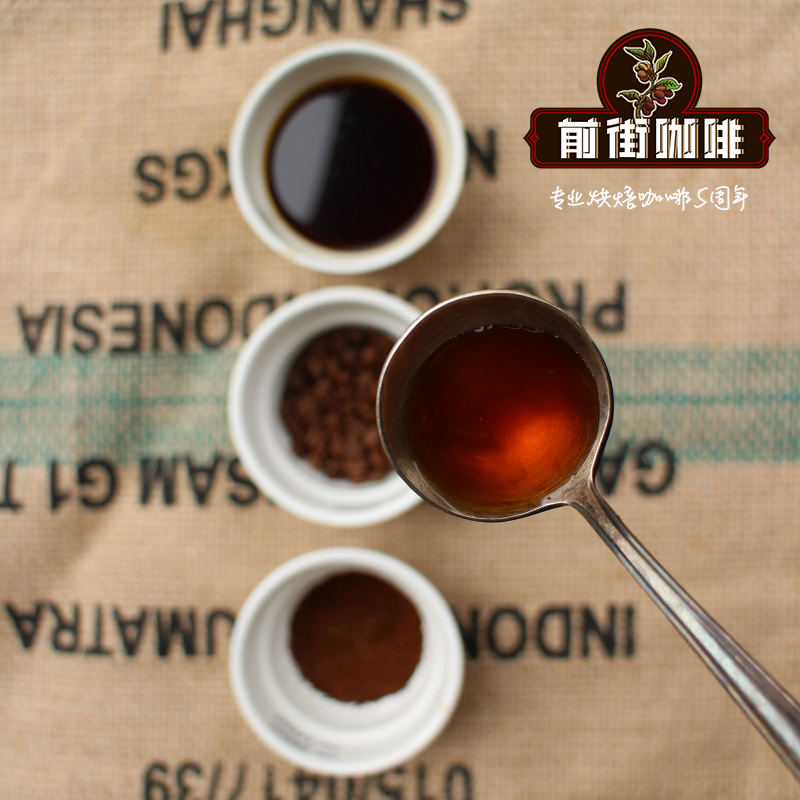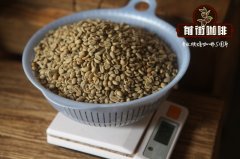Coffee roasting Why Coffee roasting is important to learn what knowledge is needed for roasting

Coffee beans are seeds that ripen in coffee cherries. They are then processed and dried into coffee beans. Before baking, coffee beans are green and have the smell of tofu and grass. In fact, raw coffee beans don't smell like coffee at all. When we bake coffee, we produce 8 to 1000 different aroma compounds. These compounds give the coffee a flavor. Through baking analysis, we can affect the existence of these aroma compounds in coffee and determine the flavor of coffee.
Coffee roasting process
Baking means changing coffee beans from green to brown. There are different production methods, which will affect the taste. I will discuss the principles of baking and commercial baking here. Learn about different ways to bake coffee at home from Tomi's blog.
Baking stage
The baking process is divided into three main stages: drying stage, browning stage and development stage or baking stage.
1. Drying stage
The humidity of coffee beans is 12%. We need to dry it before the actual baking begins. The drying phase of a traditional drum roaster usually lasts for 4 min (see below for the design of the dryer). The temperature at the end of the drying phase is usually 160 °C. Especially for drum roasters, you need to be careful not to burn the beans because of too much heat at first. The drying stage is also important for collecting energy from beans because the final stage of baking is exothermic (generating heat).
two。 Browning stage
From 160 degrees Celsius, coffee begins to smell like toast and hay. This is when the aroma precursors begin to convert into aroma compounds. Even if the browning stage is after the drying stage, the drying continues in the browning stage.
The Maillard reaction that begins to cause browning in the browning stage. In Maillard reaction, reducing sugars react with amino acids to form hundreds of different aroma and colored compounds, called melanin. This is the stage when the barbecue slows down naturally-and some bakers want to slow down, too-to ensure flavor development. At the end of the browning stage, the coffee begins to pop up. This is called the first crack, and the development phase begins.
3. Development or baking stage
At the beginning of the development phase, the reaction is exothermic and the coffee will break. During the drying and browning stages, coffee beans collect the energy that causes the coffee to explode. The development time refers to the formation of the required aroma compounds. If we don't slow down the baking during the development phase, we can easily get smoky coffee.
Baking degree
Baking degree is one of the most important indexes of baking. It can be measured by colorimeter or by tasting. Roasters usually want to improve the flavor of coffee and determine the degree of roasting. In general, light roasted coffee has higher acidity, while dark roasted coffee tastes more bitter. Similarly, fruity flavors are more common in light roasting, while roasting and scorching flavors are more common in dark roasted coffee. Because of the large amount of organic compound 5-hydroxymethyl furfural, lightly roasted coffee is more fruity. When the baking is further carried out, the compound is decomposed into less fruity compounds. The number of sulfur-containing compounds increases, resulting in the smell of roasting and burning. As a rule of thumb, we can assume that lightly roasted coffee can better represent the characteristics of birth coffee.
Baking time
Although the roasting degree has the greatest effect on the flavor of coffee, the total baking time and the time of each stage are also important factors. If you bake quickly, you will get more of the aroma compounds you need. But be careful not to burn the beans! The overall flavor of coffee (fruity, berry, chocolate, nutty) is stronger. In the rapid baking process, the amount of aroma compounds produced at the beginning of the development phase is also higher.
In some cases, fast baking is not a good idea. This may be due to the design of the roaster (see the next paragraph below) or the nature of the coffee. Rapid roasting enhances all the flavors of coffee. If we don't want to add some flavor to the coffee, we need to adjust the baking curve. For example, acidity is usually the ideal flavor, but in espresso mixtures, people sometimes want low acidity. When organic acids with slower baking speed have more time to decompose, the acidity of coffee decreases. It's slow baking. it might be a good idea.
Design of roaster
There are different dryer designs. The design affects the thermodynamics of baking, and different machines can be used to make different tastings of coffee. A small roaster usually uses a drum roaster in which the beans rotate in the drum and are then heated to the bottom with a direct or indirect flame. This makes the roaster more energetic. Baking with this type of machine is very stable, but the baker should be able to think a few minutes in advance. It is best to use a drum roaster when baking at a slow speed, because the beans will be cooked from the outside if the temperature is too high at the beginning of the baking. In Paulig Kulma, we use the traditional drum roaster-Bertha roaster-this is the Probatone 5 coffee roaster.
In this industry, fluidized bed roaster has existed for a long time. In the fluidized bed roaster, the roaster is indirectly heated by hot air. This makes the control speed of the roaster faster. Using a fluidized bed roaster, you can roast coffee more quickly without burning coffee beans from the outside, and add aroma to the coffee. An example of a fluidized bed roaster is our roaster in the Vuosaari roaster. There are also some forms of mixing between fluidized bed roaster and drum roaster, such as Loring Roasters, in which there is a drum, but heating is carried out indirectly through hot air.
Barbecue filter or espresso?
Have you ever wondered what is the actual difference between filtered coffee and espresso? The extraction of the filter is done by gravity, and the process is very mild. You can filter with very aromatic and more acidic coffee. On the other hand, the extraction pressure of espresso is 9 bar. This means that more flavors are extracted into the cup. Sometimes brewed coffee may not be as good as filtered coffee, and vice versa. Some bakers just want to roast coffee beans rather than extract them, which means creating a golden middle between too light and too deep so that coffee is suitable for both.
Traditionally, espresso is dark roasted coffee with low acidity and large volume. Filtered coffee is roasted differently in different countries, but the roasting degree is usually lighter than espresso. Today, the barbecue style is more flexible than the traditional one. For example, our Ethiopian Amaro Gayo espresso ranked third in the Helsinki Coffee Festival espresso competition. Espresso is lightly roasted and has a fast profile, making it truly aromatic and low roasting. The body is juicy rather than heavy. On the other hand, we want some of our coffee to be as strong as espresso. Then, we extend the baking time a little bit and make the development phase longer to increase the flavor and reduce the acidity.
Important Notice :
前街咖啡 FrontStreet Coffee has moved to new addredd:
FrontStreet Coffee Address: 315,Donghua East Road,GuangZhou
Tel:020 38364473
- Prev

Coffee tasting do you really know the sour coffee? what are the sour coffee?
Remember the first cup test class, I, like many others, was the most difficult to understand the flavor curve and taste wheel. It all tastes good to me. Of course, some are sour than others, but they are still coffee. In the end, I think it will be easier to remember the names of these different varieties of coffee and then remember the relevant flavor characteristics. Over the next few years, this is how I managed to become a middle school student
- Next

Will the packaging materials of raw coffee beans affect the flavor of coffee beans? what is the best packaging for raw coffee beans?
Sensory degradation of raw coffee beans may cause significant financial losses to producers, traders and roasters. However, although a certain degree of degradation is inevitable over time, the materials of coffee packaging may have a significant impact on the shelf life and quality of coffee beans. Jute, high barrier plastic, vacuum: which is really the best? How much effect does the material actually have on beans?
Related
- Beginners will see the "Coffee pull flower" guide!
- What is the difference between ice blog purified milk and ordinary milk coffee?
- Why is the Philippines the largest producer of crops in Liberia?
- For coffee extraction, should the fine powder be retained?
- How does extracted espresso fill pressed powder? How much strength does it take to press the powder?
- How to make jasmine cold extract coffee? Is the jasmine + latte good?
- Will this little toy really make the coffee taste better? How does Lily Drip affect coffee extraction?
- Will the action of slapping the filter cup also affect coffee extraction?
- What's the difference between powder-to-water ratio and powder-to-liquid ratio?
- What is the Ethiopian local species? What does it have to do with Heirloom native species?

